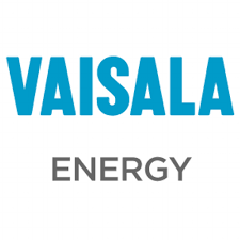Sequoia Energy Inc. adopts remote sensing device to speed up development and improve financing terms across its Canadian portfolio
October 3, 2017 – Canadian renewable energy developer Sequoia Energy Inc. has successfully used Vaisala’s Triton Wind Profiler remote sensing unit to secure financing and cut wind measurement costs in central Canada, where sub-zero temperatures, snow and ice regularly disrupt measurement campaigns. The device, deployed in tandem with a shorter, 60m meteorological (met) tower, has enabled Sequoia to identify sites for further project development and reduce vertical wind shear extrapolation uncertainty without installing costly hub-height met towers.
As the North American wind market continues to mature, project developers are increasingly looking to access more complex and remote locations to take advantage of untapped wind resources. However, these regions’ climates – as well as the increasing height of wind turbines – often raise a number of challenges for wind measurement requiring innovative and efficient means of resource assessment.
“You can only put met towers in certain places determined by consultants, landowners and of course the project terrain. Using the Triton in combination with a shorter met tower gives us better representation of hub-height wind speeds, while avoiding the cost of putting up a hub-height met mast at 100 or 120 meters,” said Dan Cox, Manager of Business Development at Sequoia.
“The cost of such a tower is significantly higher than the cost of a Triton and can be difficult to maintain even in the best conditions, let alone the challenging environments of a cold climate measurement campaign. Using the Trition in this way allows us to quickly gather hub-height measurements and lower the uncertainty of our long-term energy predictions, which improves our chances of securing financing and at favorable terms.”
Overcoming obstacles and improving financing terms
Cold climates such as those in central Canada have the potential to wreak havoc on measurement campaigns. Tall met towers can collapse from ice buildup, mechanical sensors can freeze and many remote sensing systems that are not engineered with power consumption in mind require constant maintenance and refueling.
While installing smaller met towers can reduce costs, it is then often necessary to extrapolate wind flow conditions at taller wind turbine hub heights, introducing uncertainty into the data. However, by pairing a Triton with a 60 meter met tower, Sequoia has been able to lower the uncertainty of this vertical shear extrapolation, with positive results at the project financing stage.
In addition, the Triton’s easy mobility allows Sequoia to deploy and redeploy its fleet of Triton units at a number of locations. Along with the system’s low power consumption and proven robustness in cold conditions, Vaisala’s SkyServe package, which provides secure online access to data and technical support in the field, helps the company further control its measurement campaign budgets.
To learn more about Sequoia’s use of the Triton Wind Profiler, please download our case study here.
Growing adoption in cold climate wind markets worldwide
Vaisala is an expert in wind measurement, project asessment, and energy forecasting. Its extensive Remote Sensing Revolution report, due to be published later this month, will outline how the use of remote sensing technology by developers, investors, operators and consultants has evolved within the wind industry. The report will also illustrate further examples of how remote sensing is being used in cold climates worldwide. For example, supporting developers in the northern reaches of Finland. More details available in a new video titled, Bringing Wind to the Coldest Places on Earth.
“In particularly challenging conditions, such as the arctic winters of central Canada and Scandinavia, the Triton offers an efficient and cost-effective means of collecting hub-height wind measurements,” said Pascal Storck, Director of Renewable Energy at Vaisala.
“Robust enough to withstand the ice and snow and continue collecting accurate wind data, the device itself can easily be moved from site to site – reducing the need to install expensive hub-height met masts. Its robustness also means it is increasingly being used in cold climates worldwide, and our Remote Sensing Revolution report will highlight this growing trend.”
If you would like to pre-register to receive a copy of the Vaisala’s Remote Sensing Revolution report upon release, please click here. For more information on the range of services offered by Vaisala to the renewable energy sector, please visit www.vaisala.com/energy.
Vaisala Energy
Weather provides the fuel for renewable energy projects and is one of the largest variables impacting production. Vaisala uses more than 80 years of weather expertise to help the global renewable energy industry develop and operate wind and solar projects better, faster and more efficiently. Our measurement, assessment, forecasting and asset management products and services leverage proven science and advanced technology to mitigate the impact of weather risks on energy generation and support profitable decision-making across the entire project lifecyle, from greenfield prospecting and due diligence through operational forecasting and plant optimization. www.vaisala.com/energytwitter.com/VaisalaEnergy linkedin.com/company/vaisala-energy
About Vaisala
Vaisala is a global leader in environmental and industrial measurement. Building on 80 years of experience, Vaisala provides observations for a better world. We are a reliable partner for customers around the world, offering a comprehensive range of innovative observation and measurement products and services. Headquartered in Finland, Vaisala employs approximately 1,600 professionals worldwide and is listed on the Nasdaq Helsinki stock exchange. www.vaisala.com www.twitter.com/VaisalaGroup


























